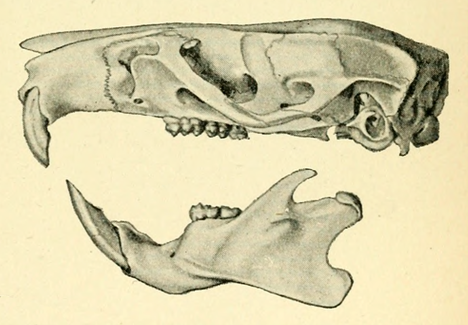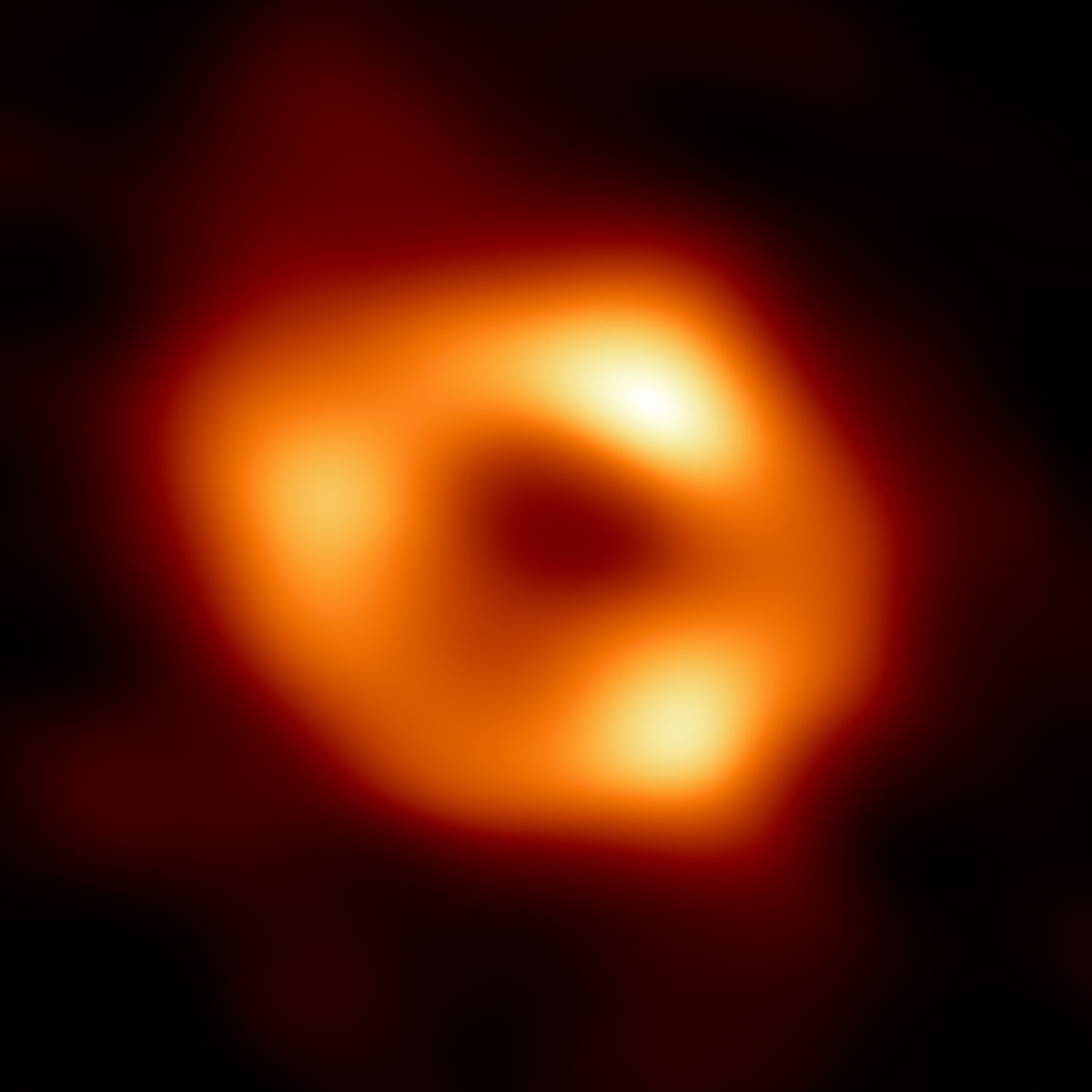Tweets
- Tweets, gjeldende side.
- Tweets og svar
- Medier
Du har blokkert @NSF
Er du sikker på at du vil vise disse tweetene? Dette vil ikke oppheve blokkeringen av @@NSF.
-
The proof is in the teeth.
@DukeU scientists say fossilized teeth prove mammals vanished from Africa & the Arabian Peninsula in a mass extinction 30M yrs ago that nobody knew about. They reappeared much later w/ a new look. https://bit.ly/3LNch5X M. Borths/Duke
M. Borths/Duke
#FossilFridaypic.twitter.com/BoHy4UbG59 Takk. Twitter bruker denne informasjonen til å forbedre tidslinjen din. AngreAngre
Takk. Twitter bruker denne informasjonen til å forbedre tidslinjen din. AngreAngre -
By digitizing collections, museums share them with the world. The
#NSFfunded@IDigBio (led by@UF@floridastate &@ASU ) has led the effort to digitize over 1.3 million specimens. Today, NSF Director Sethuraman Panchanathan visited@FloridaMuseum to see some of this work.pic.twitter.com/L9nQQHLYWN

 Takk. Twitter bruker denne informasjonen til å forbedre tidslinjen din. AngreAngre
Takk. Twitter bruker denne informasjonen til å forbedre tidslinjen din. AngreAngre -
Discarded plastic makes up almost one-third of all the waste in all the landfills worldwide. Researchers are using the power of the sun
 to upcycle plastic waste.
Learn more at
to upcycle plastic waste.
Learn more at @NSF's The Discovery Files: https://apple.co/3LTVn5s via@ApplePodcasts pic.twitter.com/UwsnGO0UD1Takk. Twitter bruker denne informasjonen til å forbedre tidslinjen din. AngreAngre
pic.twitter.com/UwsnGO0UD1Takk. Twitter bruker denne informasjonen til å forbedre tidslinjen din. AngreAngre -
Skull defects and injuries affect thousands of people every year around the world.
@penn_state researchers with@NSF support devised a way to bioprint bone with encoding genes during surgery for faster healing & repair. https://bit.ly/3wNGb5y Charles William Andrewspic.twitter.com/RxdsxwCuR5
Charles William Andrewspic.twitter.com/RxdsxwCuR5 Takk. Twitter bruker denne informasjonen til å forbedre tidslinjen din. AngreAngre
Takk. Twitter bruker denne informasjonen til å forbedre tidslinjen din. AngreAngre -
The National Artificial Intelligence Research Resource Task Force presented a report about bridging the resource divide for
#AI research. "AI doesn't just stand for artificial intelligence, it must also stand for accessibility & inclusion," NSF Director https://bit.ly/3GhMrWz pic.twitter.com/CJt9TMiJ85 Takk. Twitter bruker denne informasjonen til å forbedre tidslinjen din. AngreAngre
Takk. Twitter bruker denne informasjonen til å forbedre tidslinjen din. AngreAngre -
Five of those 12 innovators are
#NSFfunded! Register for the#StartupExpo to engage with and learn about these innovative startups.https://twitter.com/SBAgov/status/1529462609292021762 …
to engage with and learn about these innovative startups.https://twitter.com/SBAgov/status/1529462609292021762 … Takk. Twitter bruker denne informasjonen til å forbedre tidslinjen din. AngreAngre
Takk. Twitter bruker denne informasjonen til å forbedre tidslinjen din. AngreAngre -
Arctic winters are long, cold & harsh. While year-round Arctic birds have adapted to these conditions, others stop in the Arctic only during migrations. Arctic summers bring a variety of species, whether to breed & nest, molt, or fly by.
#Arctic science: https://bit.ly/3z5YdBw pic.twitter.com/P4Z6LefiLITakk. Twitter bruker denne informasjonen til å forbedre tidslinjen din. AngreAngre -
Western wildfires
 are bigger & meaner due to climate change, but
are bigger & meaner due to climate change, but @NCAR_Science's new prediction method forecasts a bad but less-devastating summer than last year's near-record. NCAR leads in wildfire studies. https://bit.ly/3MLkY1Z#WildfireAwarenessMonth#NSFfunded USFSpic.twitter.com/J67bQrkoIf
USFSpic.twitter.com/J67bQrkoIf Takk. Twitter bruker denne informasjonen til å forbedre tidslinjen din. AngreAngre
Takk. Twitter bruker denne informasjonen til å forbedre tidslinjen din. AngreAngre -
Don’t miss out on tomorrow's
#NITRD30th Symposium! This event will bring together leading experts from govt, academic & private sectors to discuss areas of computing at scale, networking, security,#AI, machine learning, privacy & the internet of things. https://twitter.com/NITRDgov/status/1528844299114360832 …Takk. Twitter bruker denne informasjonen til å forbedre tidslinjen din. AngreAngre
https://twitter.com/NITRDgov/status/1528844299114360832 …Takk. Twitter bruker denne informasjonen til å forbedre tidslinjen din. AngreAngre -
Is social life linked to brain structure? A study of rhesus macaques
 found the number of grooming partners predicted the size of parts of the brain responsible for empathy & social decisions: https://bit.ly/3LFSO7c
found the number of grooming partners predicted the size of parts of the brain responsible for empathy & social decisions: https://bit.ly/3LFSO7c
@CayoSantiagoPR
 Lauren JN Brentpic.twitter.com/MPDVMBeSBX
Lauren JN Brentpic.twitter.com/MPDVMBeSBX Takk. Twitter bruker denne informasjonen til å forbedre tidslinjen din. AngreAngre
Takk. Twitter bruker denne informasjonen til å forbedre tidslinjen din. AngreAngre -
NSF Dir Panchanathan visited
@UConn to learn about its research + innovation. He toured the campus & met some amazing NSF CAREER awardees. "The engine of innovation is driven by the amazing ideas & talent present in every one of the students, postdocs, faculty & researchers."pic.twitter.com/VlsghO5xQp

 Takk. Twitter bruker denne informasjonen til å forbedre tidslinjen din. AngreAngre
Takk. Twitter bruker denne informasjonen til å forbedre tidslinjen din. AngreAngre -
The Pacific Islands are on the front lines of the
#climatechange battle, with sea level rise a major threat to the low-lying islands. NSF is helping to enhance marine & environmental science education throughout the region to battle it. https://bit.ly/3MSawW8
@UHawaiiNewspic.twitter.com/zMcozCs1z0 Takk. Twitter bruker denne informasjonen til å forbedre tidslinjen din. AngreAngre
Takk. Twitter bruker denne informasjonen til å forbedre tidslinjen din. AngreAngre -
Fear the urban squirrel or rat?


@Georgetown scientists found that urban wildlife don't carry more human-infective viruses than rural counterparts – but more study is needed on how city living shapes disease transmission. https://bit.ly/3LCSYft#NSFfunded : Georgetown Upic.twitter.com/4PXtrHB714
: Georgetown Upic.twitter.com/4PXtrHB714 Takk. Twitter bruker denne informasjonen til å forbedre tidslinjen din. AngreAngre
Takk. Twitter bruker denne informasjonen til å forbedre tidslinjen din. AngreAngre -
Shifting habitat ranges, less abundance – warmer oceans will trigger complex changes in marine ecosystems and food webs for centuries: https://bit.ly/3sJ1aUT
@RutgersUTakk. Twitter bruker denne informasjonen til å forbedre tidslinjen din. AngreAngre -

 Today, NSF Director Panchanathan met with the Secretary of
Today, NSF Director Panchanathan met with the Secretary of @IndiaDST, Srivari Chandrasekhar, to discuss research collaborations in A.I., data science, climate, robotics and more to accelerate innovation and advance the frontiers of science.pic.twitter.com/nOTyAG3mgu Takk. Twitter bruker denne informasjonen til å forbedre tidslinjen din. AngreAngre
Takk. Twitter bruker denne informasjonen til å forbedre tidslinjen din. AngreAngre -
The male orchid bee is a master perfumer – beating his wings to disperse fragrance to attract a mate.
#NSFfunded research by@ucdavis reveals much about successful procreation and how perfumes can result in new species. https://bit.ly/3G1XYZZ#WorldBeeDay : Thomas Eltzpic.twitter.com/LUlmUrh3xC
: Thomas Eltzpic.twitter.com/LUlmUrh3xC Takk. Twitter bruker denne informasjonen til å forbedre tidslinjen din. AngreAngre
Takk. Twitter bruker denne informasjonen til å forbedre tidslinjen din. AngreAngre -
National Science Foundation Retweetet
On 15 May a total lunar eclipse graced the skies over Kitt Peak. This composite image shows the different stages of the eclipse. The long exposure near maximum totality revealed the position of stars at that time and meant the Moon appeared brighter than at other stages. 1/2pic.twitter.com/JB6sME94Lc
 Vis denne trådenTakk. Twitter bruker denne informasjonen til å forbedre tidslinjen din. AngreAngre
Vis denne trådenTakk. Twitter bruker denne informasjonen til å forbedre tidslinjen din. AngreAngre -
It's been a week since scientists at
@ehtelescope released the first image of Sgr A*, the black hole at the center of our galaxy. Want to learn how they got it? NSF's Science Matters explains how Earth became a virtual telescope to seek out black holes. https://bit.ly/3NtIMY5 pic.twitter.com/WFwyintXcy Takk. Twitter bruker denne informasjonen til å forbedre tidslinjen din. AngreAngre
Takk. Twitter bruker denne informasjonen til å forbedre tidslinjen din. AngreAngre -
National Science Foundation Retweetet
Being a
#ScienceSuperpower
 is about leveraging our global science + tech excellence for geopolitical influence to tackle global challenges.
Great to meet
is about leveraging our global science + tech excellence for geopolitical influence to tackle global challenges.
Great to meet @DrPanch, Director of the US National Science Foundation, to discuss UK-US scientific collaborations
 pic.twitter.com/566GIWoQBr
pic.twitter.com/566GIWoQBr Takk. Twitter bruker denne informasjonen til å forbedre tidslinjen din. AngreAngre
Takk. Twitter bruker denne informasjonen til å forbedre tidslinjen din. AngreAngre -
When a megafire
 engulfed the Pacific Northwest in Sept. 2020,
engulfed the Pacific Northwest in Sept. 2020, @Portland_State studied the role that extreme winds, topography & vegetation played. What they learned can inform land use planning for future extreme fire events. https://bit.ly/3wpPGry : Cody Evers
: Cody Evers
#NSFfundedpic.twitter.com/eMm2y0gM46 Takk. Twitter bruker denne informasjonen til å forbedre tidslinjen din. AngreAngre
Takk. Twitter bruker denne informasjonen til å forbedre tidslinjen din. AngreAngre
Lastingen ser ut til å ta sin tid.
Twitter kan være overbelastet, eller det kan ha oppstått et midlertidig problem. Prøv igjen, eller se Twitters status for mer informasjon.



 Register here:
Register here: 
